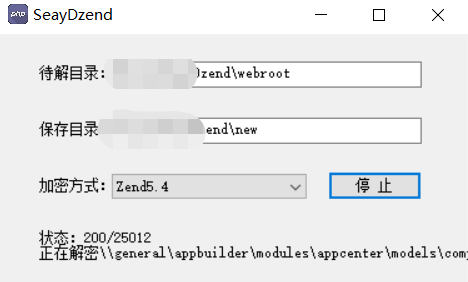I have a small UIView that displays a repeated movie. When the user taps a button another movie is loaded and displayed in the same UIView.
The problem is that there is a half second "flash" between the removing of the first movie and the displaying of the second. Is there any to remove this?
- (void) setUpMovie:(NSString*)title {
NSString *url = [[NSBundle mainBundle] pathForResource:title ofType:@"mp4"];
MPMoviePlayerController *player = [[MPMoviePlayerController alloc] initWithContentURL:[NSURL fileURLWithPath:url]];
[[player view] setFrame:self.movieView.bounds];
[self.movieView addSubview:player.view];
if ([title isEqualToString:@"Bo_idle_02"]) {
[player setRepeatMode:MPMovieRepeatModeOne];
} else {
[player setRepeatMode:MPMovieRepeatModeNone];
}
[player setControlStyle:MPMovieControlStyleNone];
[player play];
}
- (void) startDanceAnimation { [self setUpMovie:@"Bo_dance_02"]; return; }
I managed to get my movies changing without the white flash using the AVFoundation as suggested previously. sudo code below, hope it helps someone :)
Apples reference docs can be found here and I used them to get most of my information:
http://developer.apple.com/library/ios/#documentation/AudioVideo/Conceptual/AVFoundationPG/Articles/00_Introduction.html#//apple_ref/doc/uid/TP40010188-CH1-SW3
The first thing I did was to add the following class, called PlayerView (can't remember where I got it sorry) to my project. Its a subclass of UIView and its the view that the movie will be displayed in. Once you add it to your project open UI Builder, add a new view to an existing xib and change its class to PlayerView. Connect this using an IBOutlet. Again remember this is the view that will display the movie.
PlayerView.h
#import
#import
#import
@interface PlayerView : UIView {
AVPlayer *player;
}
@property (nonatomic,retain) AVPlayer *player;
@end
PlayerView.m
#import "PlayerView.h"
@implementation PlayerView
@synthesize player;
+ (Class)layerClass {
return [AVPlayerLayer class];
}
- (AVPlayer*)player {
return [(AVPlayerLayer *)[self layer] player];
}
- (void)setPlayer:(AVPlayer *)player {
[(AVPlayerLayer *)[self layer] setPlayer:player];
}
- (void) dealloc {
[super dealloc];
[player release];
}
@end
In the ViewContoller that displays the movies I have the following:
DisplayMovies.h
#import
#import
@class PlayerView;
@interface DisplayMovies : UIViewController {
IBOutlet AVPlayer *player;
AVPlayerItem *movieOneItem;
AVPlayerItem *movieTwoItem;
}
@property (nonatomic, retain) AVPlayer *player;
@property (retain) AVPlayerItem *movieOneItem;
@property (retain) AVPlayerItem *movieTwoItem;
DisplayMovies.m
@implementation DisplayMovies
@synthesize player, movieOneItem, movieTwoItem;
- (void)viewDidLoad {
// load the two movies
NSURL *movieOneItemURL = [[NSBundle mainBundle] URLForResource:@"movieOne" withExtension:@"mp4"];
AVURLAsset *movieOneItemAsset = [AVURLAsset URLAssetWithURL:movieOneItemURL options:nil];
self.movieOneItem = [AVPlayerItem playerItemWithAsset:movieOneItemAsset];
[[NSNotificationCenter defaultCenter] addObserver:self
selector:@selector(movieOneItemDidReachEnd:)
name:AVPlayerItemDidPlayToEndTimeNotification
object:self.movieOneItem];
NSURL *movieTwoItemURL = [[NSBundle mainBundle] URLForResource:@"movieTwo" withExtension:@"mp4"];
AVURLAsset *movieTwoItemAsset = [AVURLAsset URLAssetWithURL:movieTwoItemURL options:nil];
self.movieTwoItem = [AVPlayerItem playerItemWithAsset:movieTwoItemAsset];
[[NSNotificationCenter defaultCenter] addObserver:self
selector:@selector(movieTwoItemDidReachEnd:)
name:AVPlayerItemDidPlayToEndTimeNotification
object:self.movieTwoItem];
[self.player play];
}
- (void) movieOneItemDidReachEnd:(NSNotification*)notification {
// play movie two once movie one finishes
[self.player seekToTime:kCMTimeZero];
[self.player replaceCurrentItemWithPlayerItem:self.movieTwoItem];
[self.player play];
}
- (void) movieTwoItemDidReachEnd:(NSNotification*)notification {
// play movie one once movie two finishes
[self.player seekToTime:kCMTimeZero];
[self.player replaceCurrentItemWithPlayerItem:self.movieOneItem];
[self.player play];
}
The solution posted above didn't work for me. I was still getting short flashes between tracks. I was able to solve the problem by creating two views each with its own AVPlayer. I set them both playing and then switch between them by hiding the top view. This got rid of the flash, and I was able to animate a transition between the two tracks by hiding the top view by setting its alpha to 0.0 instead of using setHidden. Here is my code:
AVPlayerItem *theAsset = [self generatePlaylistAssetWithVideoOne]; //In my app this returns an AVPlayer Item
layerView1 = [[VideoLayerView alloc] initWithFrame:CGRectMake(-50, 0, 580, 320)]; //VideoLayerView is a subclass of UIView with the video layer stuff added in.
[layerView1 setPlayer:thePlayer];
[thePlayer play];
[self.view addSubview:layerView1];
AVPlayerItem *theAsset2 = [self generatePlaylistAssetWithVideoTwo];
[thePlayer2 setActionAtItemEnd:AVPlayerActionAtItemEndNone];
layerView2 = [[VideoLayerView alloc] initWithFrame:CGRectMake(-50, 0, 580, 320)];
[layerView2 setPlayer:thePlayer2];
[thePlayer2 play];
[self.view addSubview:layerView2];
Then to animate between the videos I used:
if (water) //Water is a BOOL set up earlier in the file
{
[UIView beginAnimations:nil context:NULL];
[UIView setAnimationDuration:0.5];
///DO STUFF
[layerView2 setAlpha:0];
[UIView commitAnimations];
water = NO;
}
else
{
[UIView beginAnimations:nil context:NULL];
[UIView setAnimationDuration:0.5];
///DO STUFF
[layerView2 setAlpha:1.0];
[UIView commitAnimations];
water = YES;
}
To change the videos, you just need to set the hidden view to start playing what you want and then do the switch after the flash.
I still have to come back to this project but I have received some more advice. I will be back working on this project in hopefully two weeks so I will let ye know which solution worked (fingers crossed) for me. In the mean time here's my options:
1.
You won't be able to use MPMoviePlayerController to switch the movie without a flash.
As an alternative, you can use AV Foundation. The AVPlayer -replaceCurrentItemWithPlayerItem: method will seamlessly transition from the old player item to the new one without flashes.
For more information about programming with AV Foundation, see the "AV Foundation Programming Guide" which you can find here:
http://developer.apple.com/library/ios/documentation/AudioVideo/Conceptual/AVFoundationPG/
2.
You can merge all your movies into a single (large) movie, then use the MPMediaPlayback currentPlaybackTime / endPlaybackTime properties to "select" and play the desired movie (within the large movie). If you use this technique you'll also need to make sure there's a key frame at the point in time where the new movie starts.
3.
Alternately, create a single MPMoviePlayerController object, use the -setContentURL: to set the new movie URL, and take advantage of the backgroundView property to make a more seamless transition. The backgroundView is automatically sized with the view property, but it will be hidden before the movie is preloaded. You can put a black view behind both movie views, and then make the backgroundView's backgroundColor = black, which should make it appear more seamless.
Hope this helps.
Find solution here http://joris.kluivers.nl/blog/2010/01/04/mpmovieplayercontroller-handle-with-care/ from iOS 6 you need to use [self.moviePlayer prepareToPlay]; and catch MPMoviePlayerReadyForDisplayDidChangeNotification to use [self.moviePlayer play];


